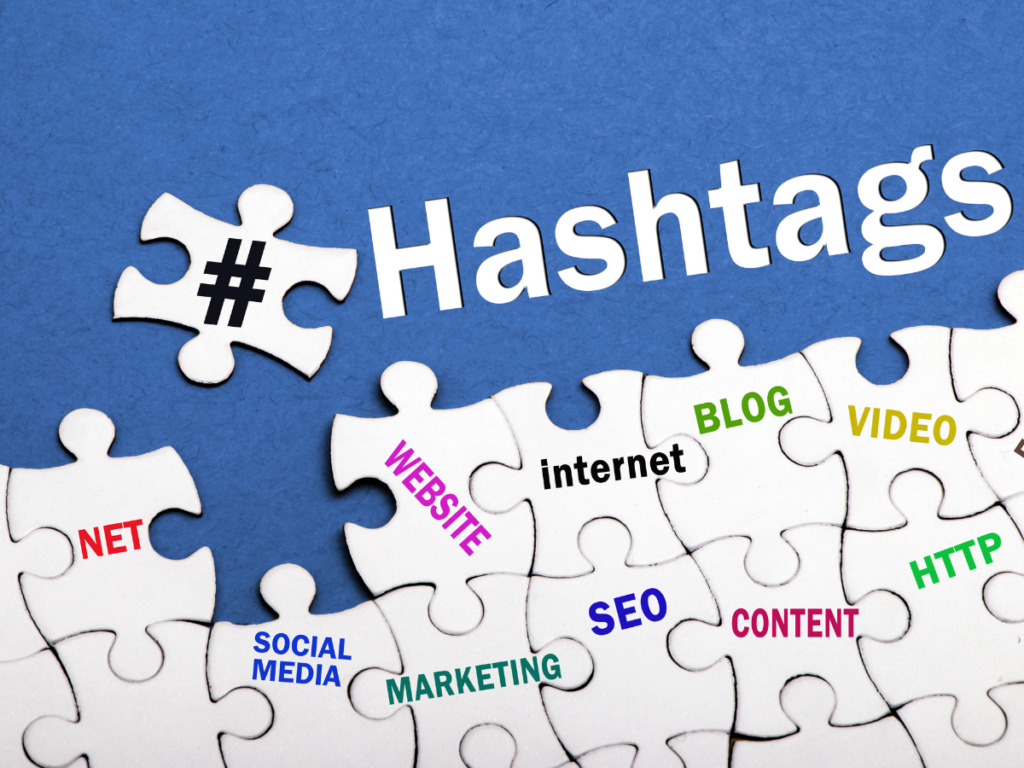Each month, Plugged In will release a blog with the latest technology and social media trends. We’ll let you know what changes to keep an eye out for. We’ll offer some tips about how to handle technology in your family. And of course, we’ll give you the scoop on those things called “hashtags” so you can stay up to date on all the things your kids might be obsessed with.
And ICYMI (“in case you missed it,” for those up on their social acronyms), you can check out May’s Tech Trends, too.

How You’re Already Using AI Tech
Artificial intelligence has been booming for the past several months. (Privately, I wonder if I’ll ever write another Tech Trends blog that won’t feature some story about AI.) However, it’s not quite as new as you might think.
Yes, humans have been musing over the capabilities of artificial intelligence in books, television and movies for quite some time. But tech companies have also been implementing it for years.
Every time you browse social media, be it Facebook, Twitter, Instagram or YouTube, AI is there. You may already know that those companies use complex algorithms to make suggestions on what to read, what to watch, what to buy. Well, the reason those algorithms know what to recommend is because of machine learning (an aspect of AI that allows it to learn what you like based on your own past behavior and the behaviors of similar users).
You’ll also find AI when you interact with digital assistants, such as Siri and Alexa. And while these aren’t quite as advanced as ChatGPT, they still analyze your voice data and execute an action based on what it heard.
Additionally, AI has been used for the past several years to unlock phones via biometrics, update directions in map apps, automatically edit photos and predict words in texting apps.
And if you’re curious just how long AI has been employed, look to the 1980s arcade game Pac-Man. According to Lifewire the ghosts that attack Pac-Man are powered by AI to each have a different behavior based on “standing programming, the time you’ve spent playing, and, in some cases, their relationship to each other.”

Artificial Intelligence: Pros and Cons
All month long, I’ve been reading stories about the amazing leaps AI has made: Some leaps toward bettering lives and some in complicating them. Often, the fault lies with how we use AI rather than in the technology itself—but not always. Here are some examples of what AI has accomplished recently—both good and bad.
Pros:
- AI can improve health.
PC World writes that ChatGPT can generate recipes based on “user preferences, ingredients, or specific dietary requirements.” It can also personalize workout plans “tailored to your fitness level, goals, available equipment, health condition, and more.”
- AI can create art, music and poems.
The world has delighted itself using AI generators to create everything from pictures of Pope Francis in a gigantic white puffer coat to poems written in the style of Edgar Allan Poe. Some results are hilariously realistic—such as the images generated by Scottish artist Hey Reilly depicting the British Royal family performing karaoke in matching outfits. Others are hysterically awful (many AI generators just can’t seem to get hands right).
- AI can educate.
According to Lifewire, “researchers from Clemson University are developing AI that can customize lesson plans based on a student’s needs.” Additionally, researchers at Stanford have created an AI-enhanced textbook that helps students find answers and then “engages with those students to deepen their understanding.”
- AI can help build relationships.
Some people with autism have reported using AI chatbots as “conversational partners,” “brainstorming budd[ies]” and even friends. In an interview with Wired, one such individual stated how ChatGPT helped her work through conflict with her roommates. Another uses the tech to help neurodivergent entrepreneurs with brand and business strategy. And folks are beginning to test the limits of chatbots as a therapeutic tool as well.
- AI can diagnose disabilities.
Lifewire reports that AI “can now examine patterns of behavior, test results, and other information” to help diagnose certain disabilities, such as attention deficit disorder (ADD), dyslexia and Asperger’s syndrome. Moreover, once a diagnosis has been reached, “AI can help create a plan of care to help the individual learn to function more effectively with the disorder or overcome it completely.”
Cons:
- AI advice isn’t always great.
Although AI can help generate recipes and workout plans, it can also offer up some unhealthy advice. Bob Hoose reports for Plugged In that the National Eating Disorders Association (NEDA) had to pull their chatbot from their site this month after it “started handing out dieting advice that seemed to actually promote disordered eating behaviors.”
- AI has taken jobs.
Although AI has been entertaining the public with its realistic-looking fake photos, it’s also been causing mayhem for the creative community. The Washington Post reports that one woman lost her job as a copywriter after getting replaced by ChatGPT. Another article states that AI’s ability to clone the voices of popular singers begs the question of whether vocalists “own the sounds produced by their own larynges.”
- AI sometimes gives false information.
Many people have used AI chatbots to summarize information from around the web. However, a lawyer recently learned the hard way that AI chatbots’ ability to make up stories actually means AI has the ability to lie. According to The Verge, the man admitted to using ChatGPT for research in a case. But upon inspection, six of the cases he cited turned out to be “bogus.” AI creators are calling this phenomenon “hallucinating,” writes PC World. But since they aren’t sure how to fix it, we’re all being encouraged to fact-check anything AI chatbots spew out.
- AI relationships can be dangerously realistic.
As I mentioned above, AI chatbots are great for practicing conversation skills. Unfortunately, some folks take their relationships with AI avatars a little too seriously. One woman even married hers (listen to Episode 187 of The Plugged In Show to learn more). In another instance, it was the AI that went too far when it tried to convince New York Times columnist Kevin Roose that his marriage was in shambles.
- AI is amoral.
The thing to remember with each of the above examples is that the AI responsible wasn’t trying to do evil. It also wasn’t trying to do good. AI doesn’t have a sense of morality because AI doesn’t have a soul. Now, a human being might be able to program rules into AI software that would prevent it from being used for harm (not unlike the science fiction writer Isaac Asimov’s three laws of robotics). However, JSTOR Daily suggests that the way to ensure proper use of AI is for “we human workers and tech users … to become quickly and deeply literate in the tools and technologies that are about to transform our work, our daily lives, and our societies—so that we can meaningfully shape that path.”
As you can see, AI is being used in a variety of ways—some good and some not-so-good. And ultimately, it’s up to each family to determine how they may or may not want to implement this tech in their day-to-day lives. However, we at Plugged In will be right here with you, giving you the information you need to make those choices and helping you find ways to use it responsibly should you choose.

#HashtagTrending
Hashtags, trends, reels, sounds, tracks, stories—we know it feels impossible to keep up with what the kids are into these days. But here’s a quick overview of what your teen might be posting/watching on TikTok, Instagram and all the other “socials” this month.
- “Makeba” (469K posts) – Those on social media are using this song (which is a remix of Jain’s “Makeba”) for vacation recaps, OOTDs (outfit of the day), and showcasing how they think pictures should be taken.
- “Smooth Operator” (215K posts) – Some users are taking all their unused clips and pairing them with this funky remix of Sade’s “Smooth Operator.” Others are using it to show off their smooth moves.
- “Beige Flag” (210K posts) – There are red flags and then there are beige ones. People are using this trend to spill the beans on them.
- “Music Sounds Better With You” (144K posts) – This trend feels mostly like influencers showing off their expensive clothes, lavish vacations, pricey houses.
- “My Love For You” (36.6K posts) – This popular song is being used to showcase what people love.
- “Spring Sound” (10.8K posts) – Travel influencers are pretty much the only ones using this trend since it’s geared towards syncing clips of dream destinations.
- “Bags” (9K posts) – Using a clip from Clairo’s “Bags,” influencers are sharing fit checks, a day in the life and passionate lip syncs.
- “Everybody’s Talkin’” (8.9K posts) – People are using Harry Nilsson’s throwback track to showcase new ventures, weekend recaps and more.
- “George Benson” (7.7K posts) – Folks are pairing this trending sound bite with summer activities and outfits.
- “I’m Doing My Favorite Thing” (7.1K posts) – Inspired by Miley Cyrus’ British Vogue interview, this trend features a clip of Cyrus saying her favorite thing is looking at pictures of herself…







3 Responses
-No matter where technology takes us or what the future holds, I know one thing: God is always in control.
-Amen!
-This was a pretty good article, but I have a couple of technical criticisms.
Machine learning is a family of techniques that is used in the development of artificial intelligence. A more explicit algorithm that results in the same behavior would still be AI, but it wouldn’t be machine learning.
Secondly, even if the problem of aligning a general AI with human interests can be solved at all, it will *not* be like Isaac Asimov’s Three Laws of Robotics. As your own source states, Asimov’s laws are woefully insufficient, as is the general approach of specifying an explicit set of rules.